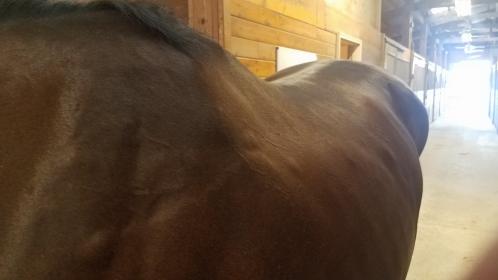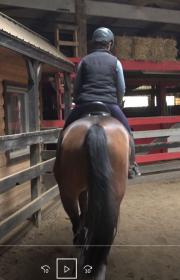This horse is putting me through the ringer lately, and I’m honestly getting really discouraged.
A little over a week ago my mare fell on her left side while screwing around in turnout. Turnout is sand, and was not frozen. She got up, had scraped the inside of her left hind leg up pretty good, but otherwise seemed fine. A couple ooh-ahh-ouch steps, and then she took off again and didn’t seem worse for the wear.
We worked anyways, even with the scrape on her leg. We just forwent boots back there and carried on - it was sensitive to the touch but she wasn’t unsound on it.
A week later, we have severe hindquarter asymmetry. She still feels to be riding the same. Looks the same on the lunge. Is sensitive to palping along the left side of the loin, but really minor. Is always resting a foot behind, but alternates and not in an “ouch ouch” type way. She has been way more unsound for longer periods of time without this happening.
[ATTACH=JSON]{“data-align”:“none”,“data-size”:“full”,“data-attachmentid”:10583826}[/ATTACH]
She will be seen this week by a vet+bodyworker, but has anyone seen something like this come on so fast? What was the result?




